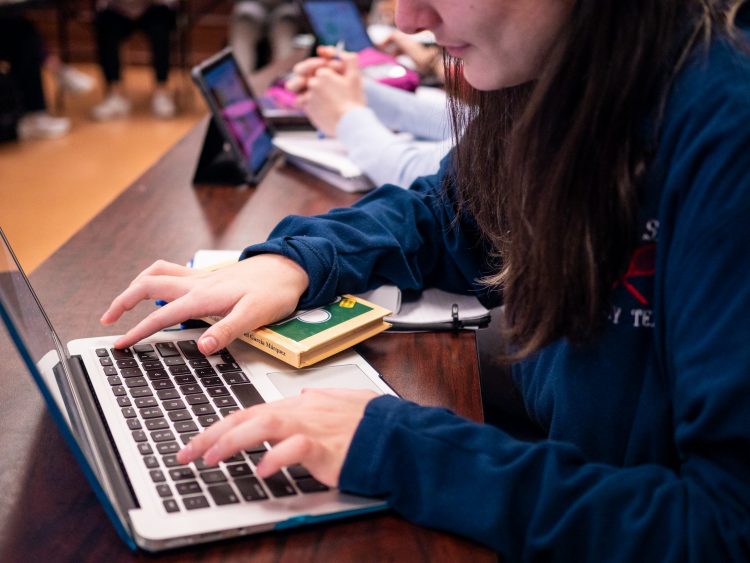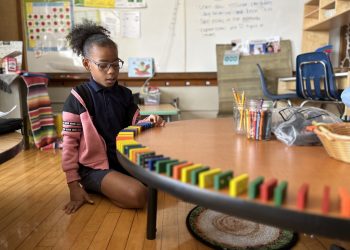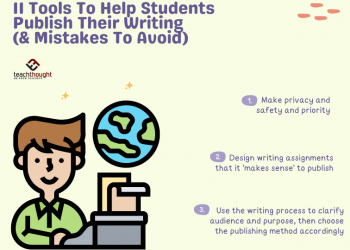The pandemic’s disruption to America’s schools was a mere dress rehearsal for what’s to come. The certainty of climate change and likelihood of more pandemics and other large-scale disruptions leave us with questions about what the future of education will look like.
While that may sound alarming, I see it as an opportunity. We should use this moment to catalyze a digital transformation of education that will prepare schools for our uncertain future.
As challenging as the last two years have been, academically and on the mental health of teachers and students, some schools have worked collectively, distributing devices, developing new health and safety protocols and shifting to virtual classrooms.
What should come next is an examination of how schools can more deeply and deliberately harness technology to make high-quality learning accessible to every learner, even in the wake of a crisis. That means a digital transformation, with three key levers for change: in the classroom, in schools and at the systems level.
By using these three levers, we can build capacity, know-how and infrastructure, so that we will not only be prepared for the next disruption, but also have the flexibility to adjust and respond to student needs and ultimately leapfrog inequalities in education.
Related: Bringing ‘inclusive innovation’ to school districts
We know that each student learns differently. The personalization movement as well as Individualized Education Plans (IEPs) for special education services have moved schools toward accommodating the needs of each student, but never fully succeeded due to a lack of capacity and overburdened teachers.
The science of learning and development, enabled by technology, can help us support teachers’ efforts to address their students’ unique learning needs. Digital Promise’s Learner Variability Navigator, for example, is a free, research-based tool that provides educators with tailored recommendations for lessons that support the full diversity of learners.
Tools powered by artificial intelligence will also help. Investment in AI in education greatly increased from 2019 to 2020, and I expect most education technology products will incorporate some form of artificial intelligence by 2027; ideally this will lead to better user-centered products. For example, Quill, which focuses on improving writing skills, is already using AI to deliver true personalization in the classroom.
We should use this moment to catalyze a digital transformation of education that will prepare schools for our uncertain future.
Platforms like these help improve student outcomes by enhancing teachers’ ability to meet individual students’ needs. They also allow learners to master new skills at their own pace, in their own way. These tools are key to bolstering educator capacity and addressing the inequities exacerbated during pandemic distance learning.
A digital transformation will also enable more dynamic ways of monitoring and supporting student progress. AI, for example, can support enhanced early warning systems that allow teachers and administrators to accurately identify needed interventions for individual learners.
We can also move beyond outdated student records and transcripts. A digital wallet, often referred to as a Comprehensive Learner Record (CLR), will include a student’s educational and employment record, shifting ownership from the institution to the learner.
Related: How to plan for a future of education where disruption is the norm
And the digital transformation will honor learning that occurs outside of the classroom, allowing a shift to competency-based learning, perhaps using microcredentials and badges. This will transform how we think about students’ qualifications to graduate high school, attend college and join the workforce.
As technology is further embraced in the classroom, we need to ensure that local and national policies support and enable these innovations while enhancing privacy and protecting student data. Although there are already federal laws in place, such as the Family Educational Rights and Privacy Act (FERPA) and the Children’s Internet Protection Act (CIPA), that address data security and the online safety of minors, they may not be enough. School systems are vulnerable to cyberattacks, and the pandemic-related rise in online learning has exacerbated the potential threats of exposing staff and student data.
Funding from government and philanthropy can support innovations and focus as much on development as research, creating true research-practice partnerships. The Defense Advanced Research Projects Agency provides a great model of what a similar partnership could look like in education. State and federal policies need to provide the foundation for ongoing technological research and innovation, affordability and sustainability.
As we’ve seen over the last two years, educational equity, crisis preparedness and access to technology are deeply intertwined. When we create more individualized, enhanced learning experiences inside the classroom by giving our teachers, students and administrators innovative tools and building the necessary technological infrastructure, schools will be ready for anything.
And, more importantly, every child can get on a path to creating a meaningful and fulfilling life. We’ve already started building the foundation for a digital transformation in education. Let’s continue to invest our time, funding and energy this fall and beyond.
Jean-Claude Brizard is the president and CEO of Digital Promise, a global nonprofit working to expand opportunity for every learner. He is the former chief executive of Chicago Public Schools.
This story about a digital transformation of education was produced by The Hechinger Report, a nonprofit, independent news organization focused on inequality and innovation in education. Sign up for Hechinger’s newsletter.
Related articles
The Hechinger Report provides in-depth, fact-based, unbiased reporting on education that is free to all readers. But that doesn’t mean it’s free to produce. Our work keeps educators and the public informed about pressing issues at schools and on campuses throughout the country. We tell the whole story, even when the details are inconvenient. Help us keep doing that.
Source by hechingerreport.org










